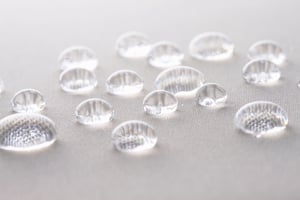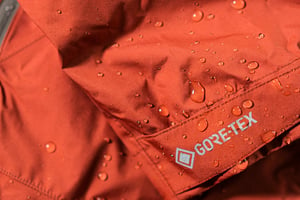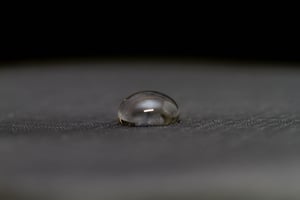Hello outdoor enthusiasts! Today we're going to thoroughly examine the claim that "applying heat to...
7 Misconceptions About DWR - What Outdoor Enthusiasts Should Know
Hello, today I'd like to talk about DWR (water-repellent treatment), which many people misunderstand.
High-performance gear like GORE-TEX is well-known among outdoor enthusiasts, but there are many misconceptions about DWR (Durable Water Repellency) that affect its performance. Our shop often receives inquiries like "My jacket gets wet more easily now" or "I feel like the waterproofing has decreased."
In fact, most of these concerns stem from misunderstandings about water repellency. Based on my over 20 years of experience selling outdoor gear, I'll explain the 7 common misconceptions.
Misconception 1: "GORE-TEX's waterproofing decreases"
This is a complete misunderstanding!
What decreases is not "waterproofing" but "water repellency." These are two completely different properties.
Waterproofing: The ability to prevent water from passing through the fabric
Water repellency: The ability of fabric to resist absorbing water
GORE-TEX's waterproofing performance is due to a special membrane inside. As long as this membrane doesn't physically tear, the waterproofing performance won't decrease.
On the other hand, water repellency is a chemical effect that makes the fabric surface repel water, and it gradually decreases due to wear from use. This is why you feel your jacket "gets wet more easily."
Misconception 2: "DWR only affects breathability"
This understanding is correct but incomplete.
When DWR decreases, breathability does worsen, but there are two other major problems:
- The fabric absorbs water, making your body cool down more easily
- The jacket becomes heavier as it absorbs water
Waterproof breathable materials like GORE-TEX have a "sandwich structure." The waterproof breathable membrane is sandwiched between the outer fabric and lining. If the outer fabric loses its water repellency, it absorbs water just like ordinary fabric.
This not only makes your jacket heavier but also makes you feel colder as it draws heat from your body. Have you ever suddenly felt cold while hiking on a rainy day? It might be due to decreased DWR.
Misconception 3: "Washing removes the DWR from rain jackets"
This is half correct, half misconception.
While washing does gradually weaken DWR, with proper washing methods, the decrease is less than you might think.
In fact, DWR on high-quality outdoor wear is designed to maintain some performance even after 50-100 washes!
The problems come from "incorrect washing methods":
- Using strong detergents
- Using too much detergent
- Insufficient rinsing
These cause rapid deterioration of water repellency. In my household, we never use fabric softener and wash gently with specialized detergent.
Misconception 4: "DWR decreases with the passage of time"
This is also a misconception!
DWR doesn't decrease simply because "time has passed." It decreases due to various stresses during actual use:
- Friction between clothes
- Rubbing against backpacks
- Dirt accumulation
- Stress from rain
In other words, a new jacket that has been in the closet for a year should maintain almost the same water repellency as when it was new. Meanwhile, a jacket used every weekend will see decreased water repellency according to its frequency of use.
Misconception 5: "Applying heat restores DWR"
This is partially correct.
There are three main factors that cause DWR to decrease:
- Dirt accumulation
- DWR coating coming off
- DWR becoming "accustomed" to water
Only in the third case, when it has "become accustomed to water," is there a possibility of recovery through heat treatment. If a jacket that worked perfectly last year suddenly doesn't repel water this season, it's worth trying!
Specifically, dry it in a dryer on low heat for 10-15 minutes, or iron it at a low temperature with a pressing cloth.
However, heat treatment alone won't help with other causes:
- If dirt is the cause → Proper washing is needed
- If the DWR has come off → Retreatment is necessary
Misconception 6: "More DWR treatment is better"
This is completely wrong!
You might think "applying more will make it last longer," but it can actually be counterproductive:
- Potential decrease in performance
- May cause staining
- More likely to create uneven application
Always follow the recommended amount when using commercial DWR treatments. Even as professionals, we believe in applying "not too little, not too much."
Misconception 7: "Commercial DWR treatments are the same as factory DWR treatments"
Unfortunately, this is also a misconception.
The DWR treatment applied at factories and what we do at home are completely different:
Factory treatment:
- Uses specialized machines
- High temperature and pressure treatment for deep penetration into fibers
- Uniform application
Home treatment:
- Spray or soak-type applications
- Easy to use without mechanical processing
- Difficult to achieve completely uniform application
The biggest advantage of home DWR treatments is convenience, but it's difficult to expect the same performance as factory treatments.
Summary
DWR is a crucial element that affects the comfort of outdoor gear. With correct knowledge and proper care, you can maintain its performance for a long time.
Tips for routine care:
- Wash gently with appropriate detergent
- Rinse thoroughly
- Apply heat treatment when needed
- Don't leave dirt on your gear
If you're having trouble restoring water repellency, our store also offers professional DWR retreatment services. Feel free to consult with us!



